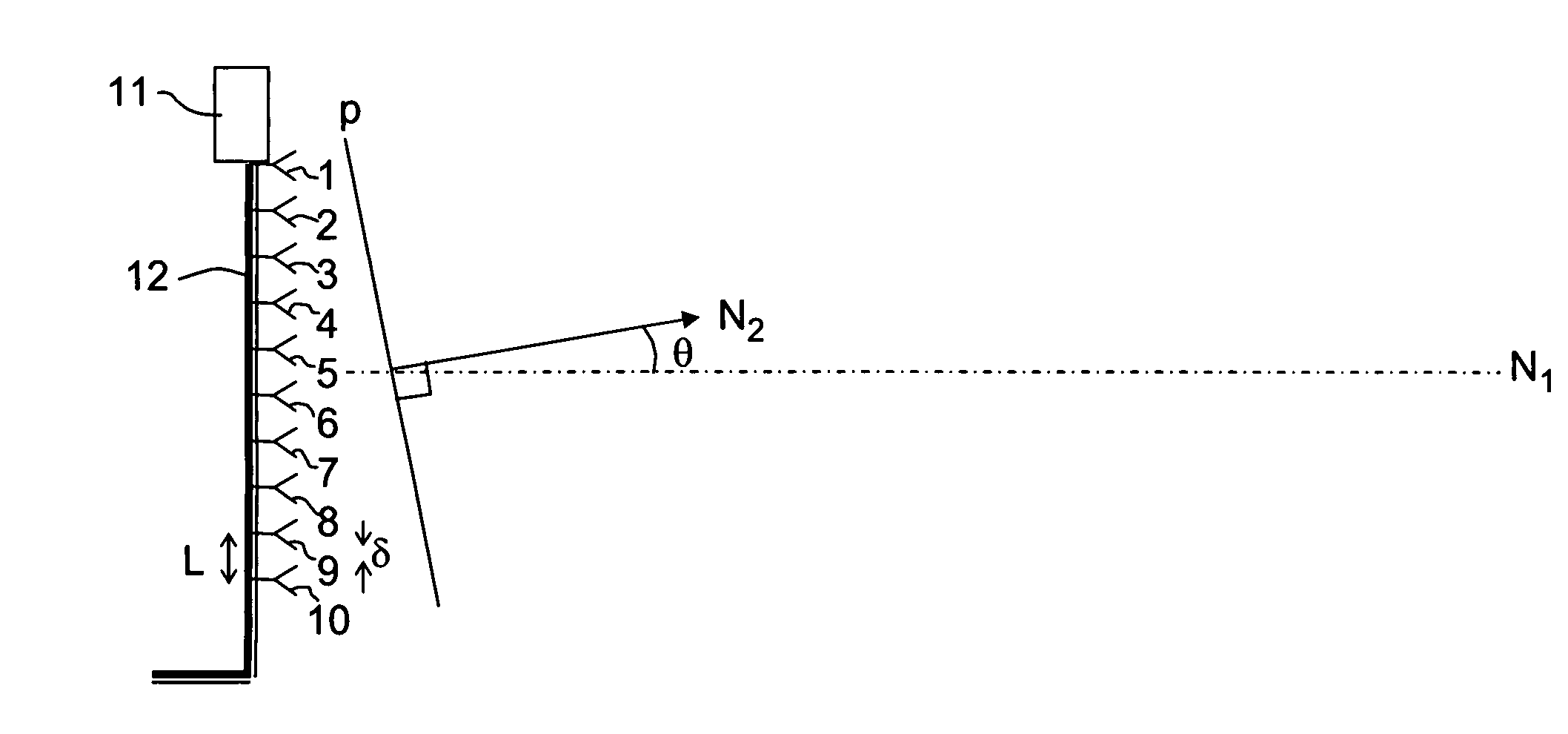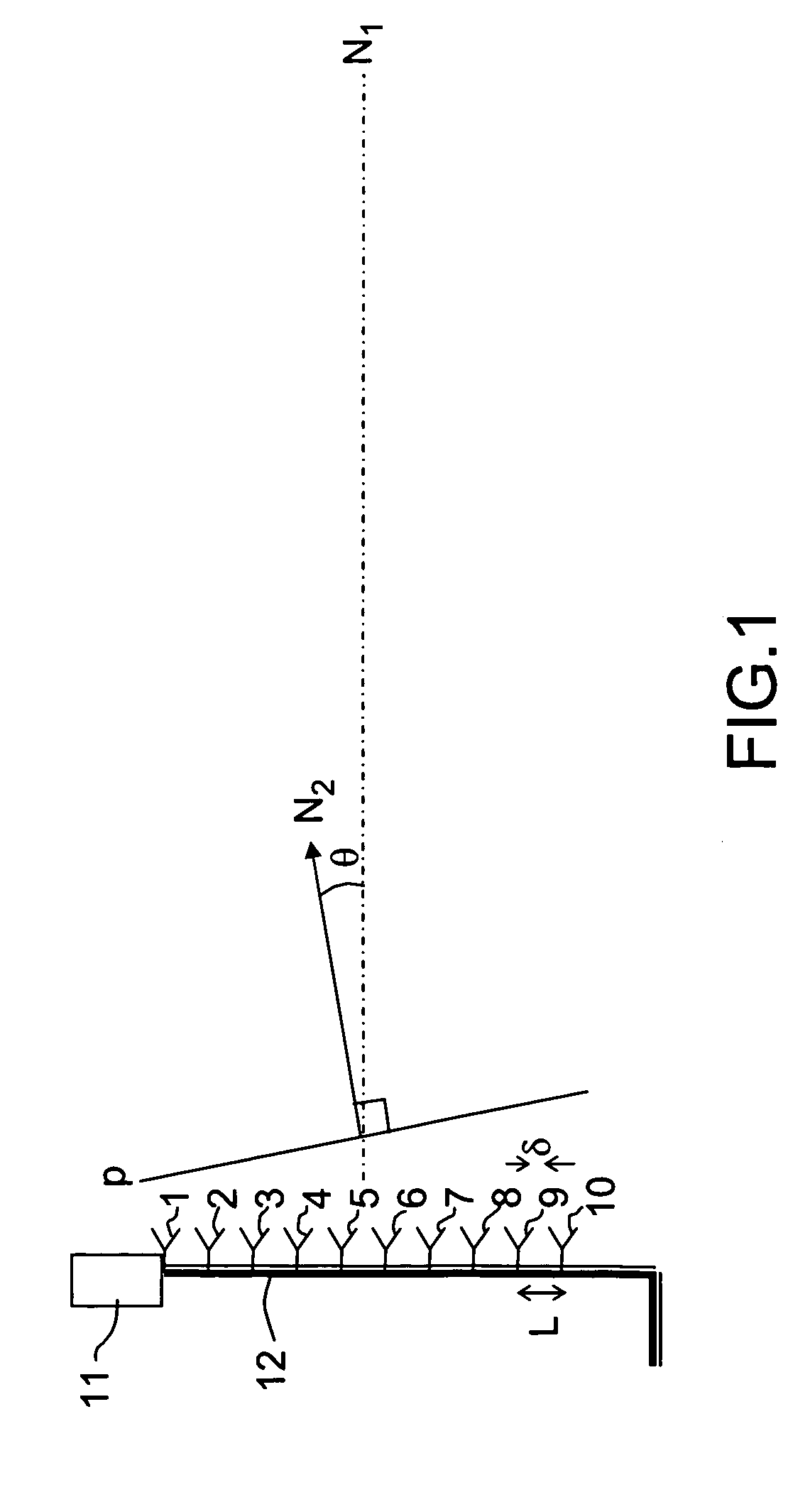Antenna including a serpentine feed waveguide coupled in parallel to a plurality of radiating waveguides, and method of fabricating such antennas
- Summary
- Abstract
- Description
- Claims
- Application Information
AI Technical Summary
Benefits of technology
Problems solved by technology
Method used
Image
Examples
Embodiment Construction
[0024]FIG. 1 is a lateral view of an antenna illustrating the principle of shifting the phase of the send channels of a radiating array to achieve scanning of the beam. A matched load 11 terminates a vertical feed waveguide 12 including radiating sources or send channels 1, 2, 3, 4, 5, 6, 7, 8, 9 and 10. The feed channels of the radiating waveguides can be slots in the waveguide 12, for example. They constitute a vertical radiating array. The general principle of electronic scanning is to shift the phase of the send channels of the radiating array relative to each other so that the phase of the microwave signal in two-dimensional space occupied by the sources of the array forms a plane P referred to as the “wave plane” or the “phase plane”, a normal N2 to the plane P indicating a pointing direction θ of the beam relative to a normal N1 to the radiating array. The present invention proposes to control the phase plane P without using variable phase-shifters. The idea is to create the ...
PUM
| Property | Measurement | Unit |
|---|---|---|
| Angle | aaaaa | aaaaa |
| Angle | aaaaa | aaaaa |
| Mechanical properties | aaaaa | aaaaa |
Abstract
Description
Claims
Application Information
 Login to View More
Login to View More - R&D
- Intellectual Property
- Life Sciences
- Materials
- Tech Scout
- Unparalleled Data Quality
- Higher Quality Content
- 60% Fewer Hallucinations
Browse by: Latest US Patents, China's latest patents, Technical Efficacy Thesaurus, Application Domain, Technology Topic, Popular Technical Reports.
© 2025 PatSnap. All rights reserved.Legal|Privacy policy|Modern Slavery Act Transparency Statement|Sitemap|About US| Contact US: help@patsnap.com



